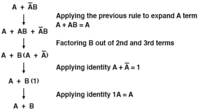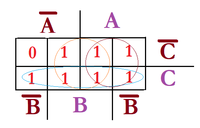Hi guys, so I have been asked to simplify this boolean expression B + A'C + AB' and I just don't know where to start.
Have you been taught a particular procedure to follow? Then do whatever the first step is, and show us what you did. (Also show us a summary of your procedure, or an example you were given.)
On the other hand, if you were just given a list of properties (such as distribution and absorption) and set free to discover what you can do with them, then do so! This is the sort of thing that you only learn by trying, just as children learn to do things by playing with them.
You must be willing to do something without being sure it is the "right" thing, and just see whether it accomplishes anything. If it does, do more; if it doesn't, back up and try something else.
In other words, the place to start is with anything you think of. Just try it.
If you were given examples, show those to us, and think about whether any of the things they do there will work for yours.
I tried looking for a site that teaches a procedure, and didn't find any to share with you. But I did find some useful examples. For example, try
this or
this.
The former says this: "When using the laws to simplify Boolean expressions, you are doing a pattern matching activity to look for parts of the expression that you can replace with a simpler version. To do this easily, you need to know all the Boolean laws; if it's possible to apply several laws, you need to consider which one will help most for the next step of the simplification."


